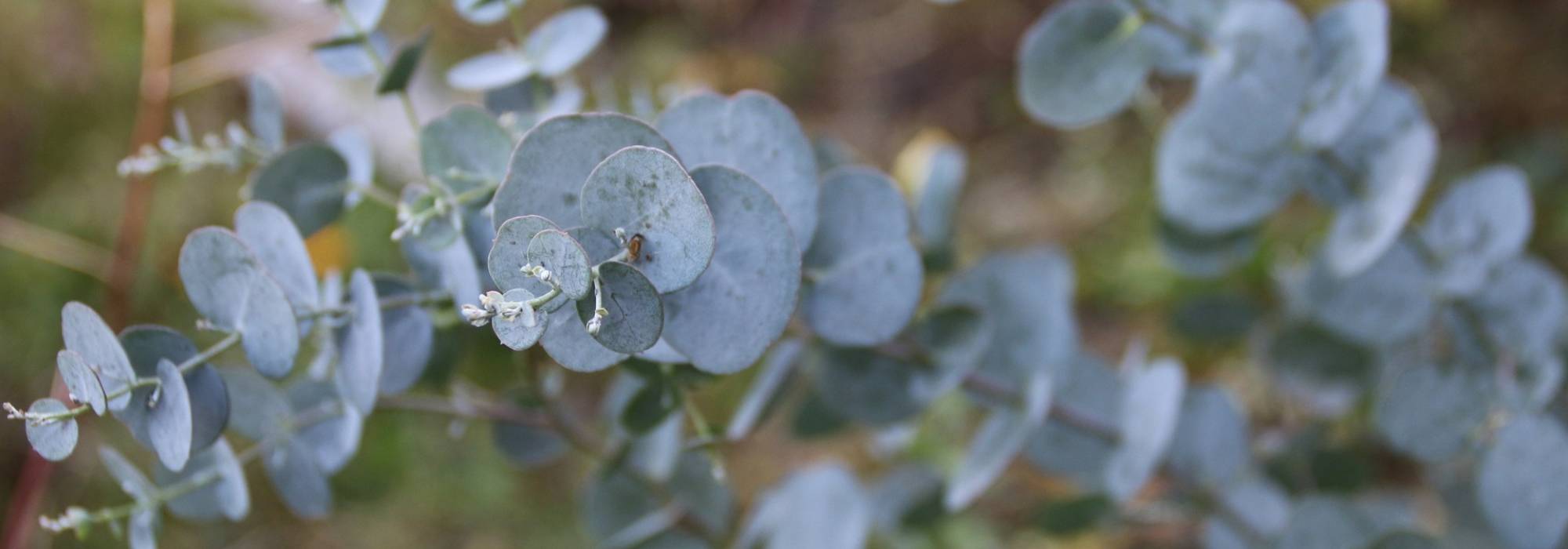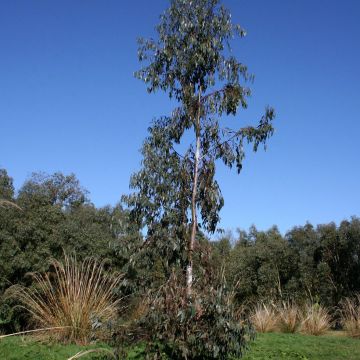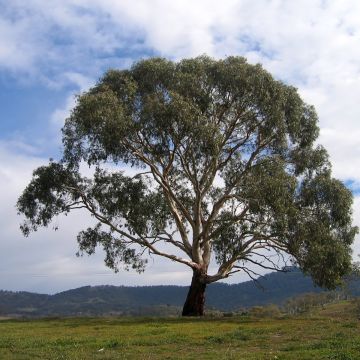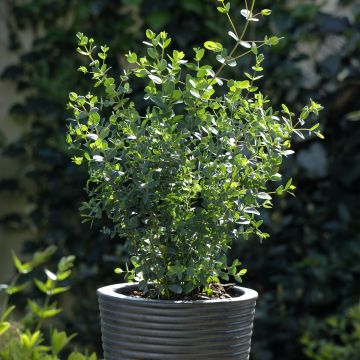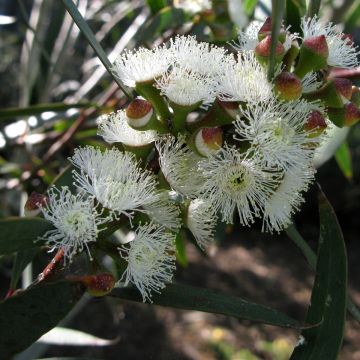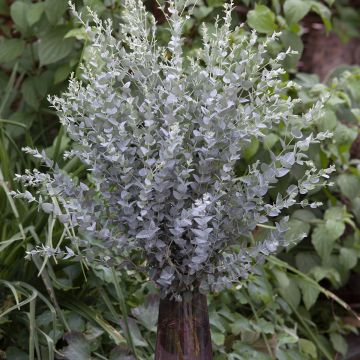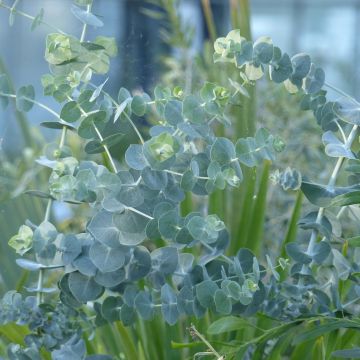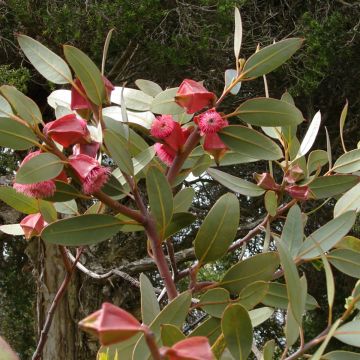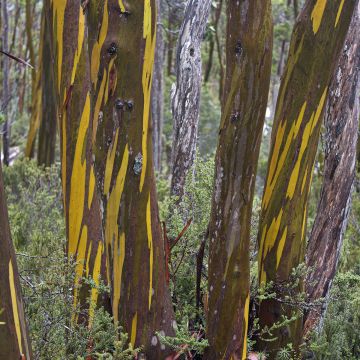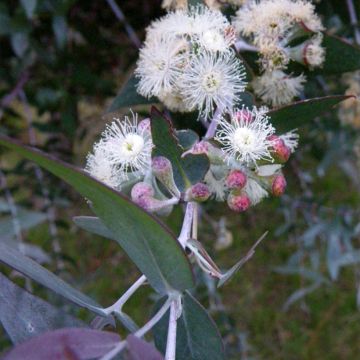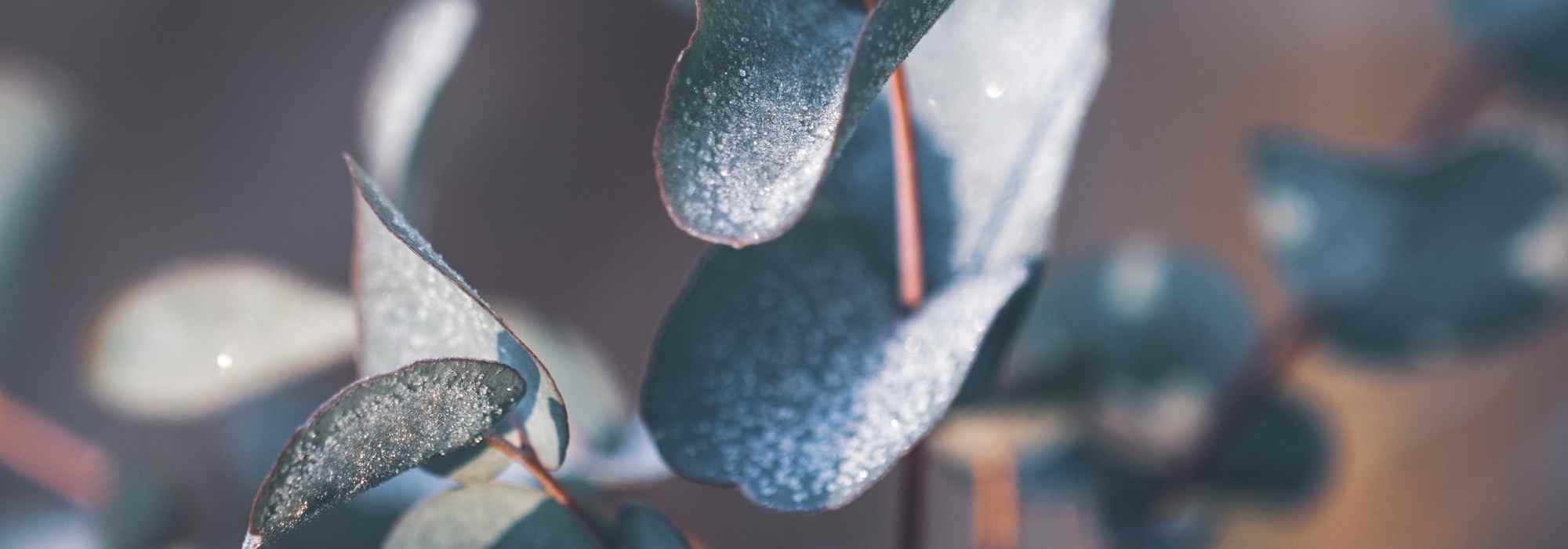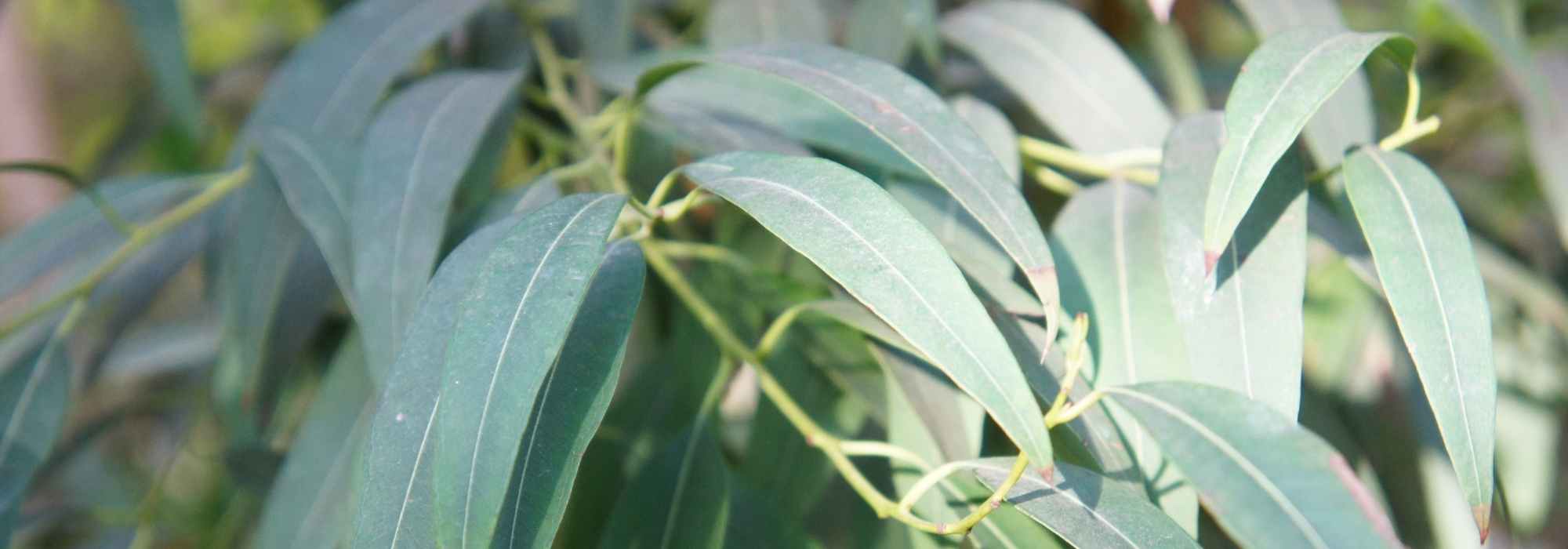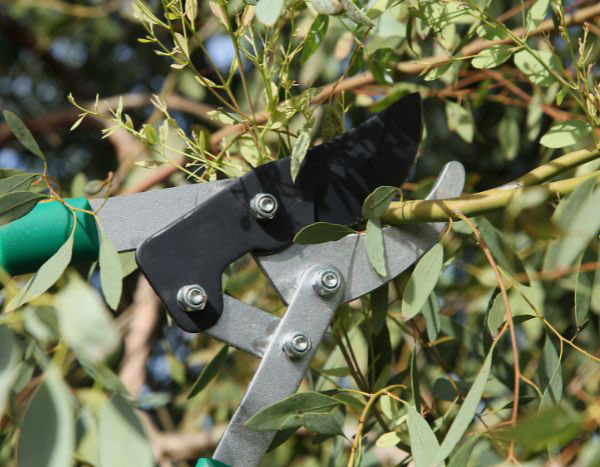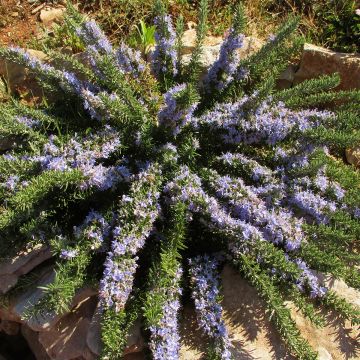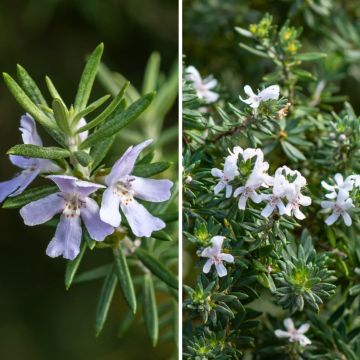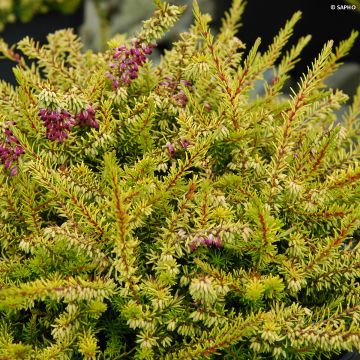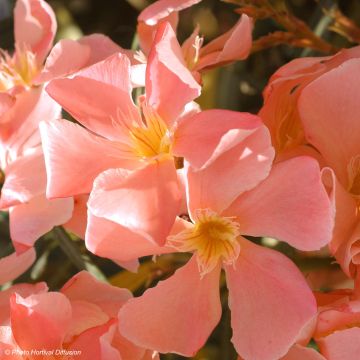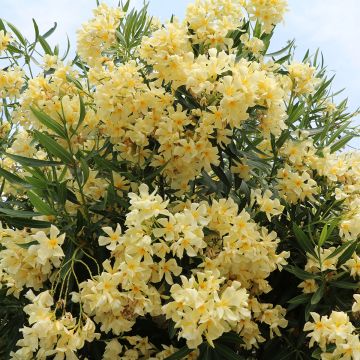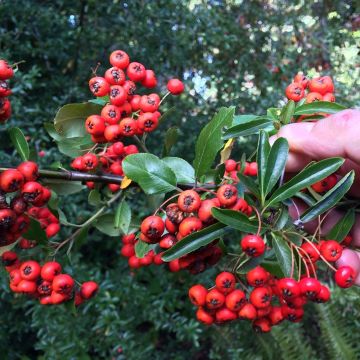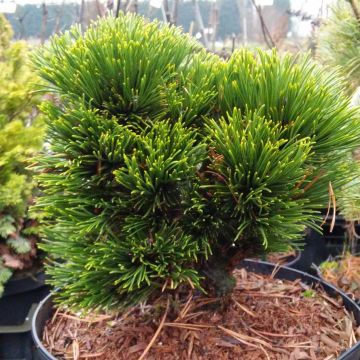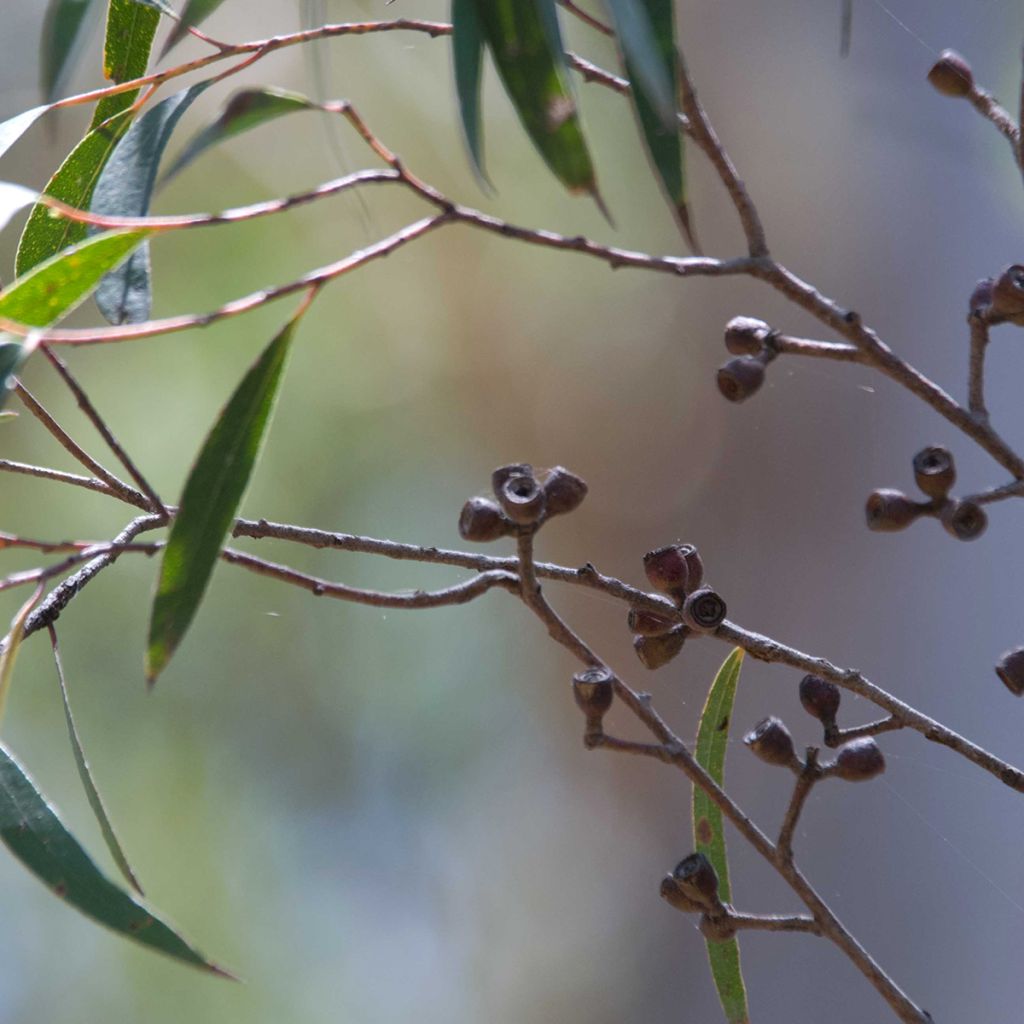

Eucalyptus stricta


Eucalyptus stricta
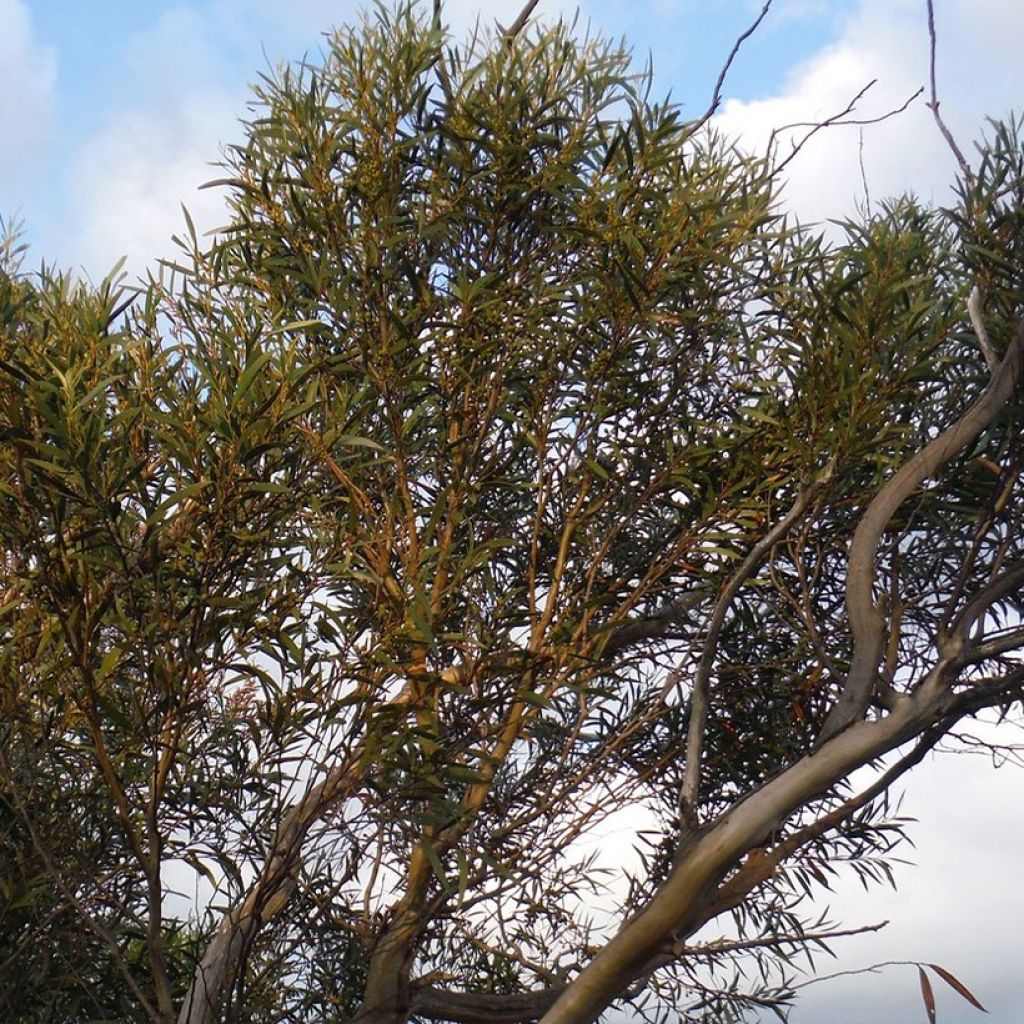

Eucalyptus stricta
Eucalyptus stricta
Eucalyptus stricta
Blue Mountains Mallee
Hello, a big thank you to you! I am truly delighted to see my eucalyptus already sprouting lovely little leaves!!! I must admit that in my last order, only the Pierre de Ronsard rose and the banana plant recovered, and the Polianthes from the other order you delivered were in a very sorry state. I was so happy to see this eucalyptus... I ended up buying another Asimina, unfortunately from one of your competitors, as I must admit I was quite discouraged, but well... I’ll keep you updated on how my eucalyptus progresses....
SOPHIE-CHARLOTTE, 14/05/2025
Special offer!
Receive a €20 voucher for any order over €90 (excluding delivery costs, credit notes, and plastic-free options)!
1- Add your favorite plants to your cart.
2- Once you have reached €90, confirm your order (you can even choose the delivery date!).
3- As soon as your order is shipped, you will receive an email containing your voucher code, valid for 3 months (90 days).
Your voucher is unique and can only be used once, for any order with a minimum value of €20, excluding delivery costs.
Can be combined with other current offers, non-divisible and non-refundable.
Home or relay delivery (depending on size and destination)
Schedule delivery date,
and select date in basket
This plant carries a 24 months recovery warranty
More information
We guarantee the quality of our plants for a full growing cycle, and will replace at our expense any plant that fails to recover under normal climatic and planting conditions.
Would this plant suit my garden?
Set up your Plantfit profile →
Description
Eucalyptus stricta, nicknamed the blue mountain gum, is an Australian species with original aesthetics. Of moderate growth, this large bush or small tree, branched from the base, has dense vegetation, a beautiful, slightly shiny green. Its very fine foliage could be mistaken for a willow and gives it a very architectural appearance. It also produces generous flowering, in the form of lovely white pompoms. Low maintenance, it grows in ordinary, well-drained soil, even sandy, and in sunny exposure. Its limited hardiness and adaptation to hot summers make it a good choice for planting throughout the south.
This Eucalyptus is a member of the Myrtaceae family, rich in ornamental and fruit-bearing genera from tropical and warm temperate regions around the world. The Eucalyptus genus includes approximately 800 species, some of which produce some of the tallest trees in the world (E. regnans can reach up to 100 m (328 ft 1 in) in height!). Others, on the contrary, belong to the group of mallees (from the English word "mallee" itself derived from an Aboriginal word), meaning plants that do not exceed 10 m (32 ft 10 in) in height and are branched from the base.
This is the case for this species which sometimes forms a small tree with multiple trunks, 7 to 8 m (23 to 26 ft 2 in) tall, or a large, well-branched and spreading bush, 5 m (16 ft 5 in) tall and 4 m (13 ft 1 in) wide. Eucalyptus stricta is native to the eastern part of New South Wales, southeast Australia, where it generally grows on sandy plateaus and ridges. These regions are characterized by hot summers but without a real dry season. It is one of the many Eucalyptus species with a lignotuber, just below the surface of the soil. This organ allows it to regenerate from the stump in case of severe frost, fire, or pruning to ground level. The plant also produces numerous shoots from dormant buds located under its bark, which allows it to respond very well to coppicing and pollarding.
Eucalyptus stricta has dense vegetation, with beautiful, deep green foliage which is slightly shiny, and fine. This plant has fewer differences between juvenile and adult foliage than in other species. The juvenile foliage is lanceolate, with sessile and opposite leaves, measuring 7 to 14 cm (2.8 to 5.5 in) long and 1.5 to 3.5 cm (0.6 to 1.4 in) wide. The adult leaves are just slightly shorter (6 to 11 cm (2.4 to 4.3 in) long) but mostly narrower (0.6 to 1.6 cm (0.2 to 0.6 in) wide), alternate and petiolate. When it takes on a treelike form, the narrow and multiple trunks have a beautiful bark that ranges in colour from white and pale grey to brown and pink.
The flowering is abundant, consisting of umbels in the axils of the leaves, which generally group together 7 flower buds. These open into a bouquet of white stamens, forming visible white pompoms in the middle of the very fine foliage. In Australia, this Eucalyptus can flower almost any month of the year. In our climates, flowering normally takes place between April and June, adding to the ornamental interest of this original shrub.
Eucalyptus stricta has a slower growth rate than other species, growing at a rate of 1 to 1.50 m (3 ft 4 in to 4 ft 11 in) per year. It needs well-drained soil to thrive, with a neutral to slightly acidic pH. It does not appreciate heavy clay soils, preferring rather sandy soils. Its hardiness is limited, around -8°C (17.6 °F) to -10°C (14 °F) under good conditions (very well-drained soil, not too prolonged frost...).
With its unusual appearance, this Eucalyptus, with its slight resemblance to a willow or Phillyrea angustifolia, is betrayed by its leaves being slightly aromatic when crushed. With its beautiful white flowering contrasting against the dark green foliage, it is truly ornamental and deserves a place in the garden, especially since it responds well to pruning and its habit can easily be kept more compact. It will be a good subject to create an exotic scene, alongside Callistemon x laevis, a Bottlebrush with spectacular bright red bottlebrush-like flowers, also native to Australia. Acacia pravissima, a Mimosa little-known despite its multiple qualities, will also be a good companion. In addition to its original triangular leaves, and of course its stunning and fragrant yellow spring flowering, it proves to be more frost-resistant than many other more widespread species. And to bring vibrant colours, nothing beats Cistus purpureus with its large dark pink flowers, which are well highlighted against its dark green evergreen foliage.
Eucalyptus stricta in pictures
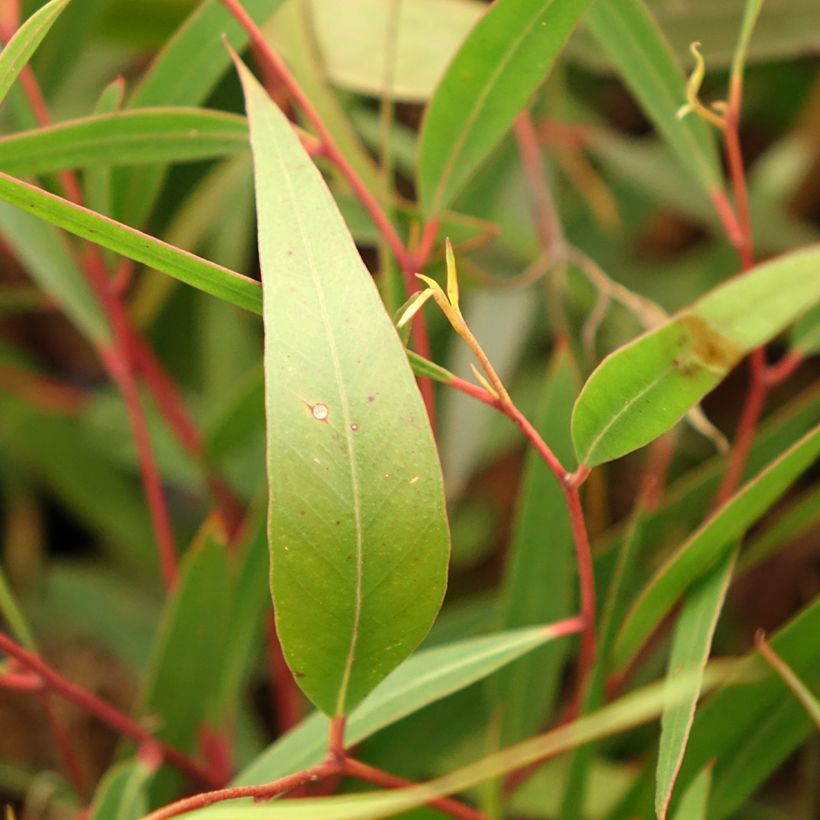

Plant habit
Flowering
Foliage
Botanical data
Eucalyptus
stricta
Myrtaceae
Blue Mountains Mallee
Australia
Other Eucalyptus
View all →Planting and care
Eucalyptus stricta should be planted in early autumn in a mild climate, or in early spring after the last frost in colder climates, to allow it enough time to establish its roots before winter. This species thrives in well-drained soil, preferably sandy rather than heavy clay. A neutral soil (pH 6 to 7) suits it perfectly, as well as a sunny exposure.
Soak the root ball in a bucket for fifteen minutes to ensure it is well saturated before planting, then water generously once in the ground. Provide regular watering during the first two years, then occasional watering during extended dry periods.
There is no need for pruning, but the plant tolerates it very well after 3 or 4 years of cultivation. In March, you can cut it back close to the ground to form a beautiful, dense bush, reaching a height of 2-3m (6 ft 7 in-9 ft 10 in).
Planting period
Intended location
Care
Planting & care advice
-
, onOrder confirmed
Reply from on Promesse de fleurs
Similar products
Haven't found what you were looking for?
Hardiness is the lowest winter temperature a plant can endure without suffering serious damage or even dying. However, hardiness is affected by location (a sheltered area, such as a patio), protection (winter cover) and soil type (hardiness is improved by well-drained soil).

Photo Sharing Terms & Conditions
In order to encourage gardeners to interact and share their experiences, Promesse de fleurs offers various media enabling content to be uploaded onto its Site - in particular via the ‘Photo sharing’ module.
The User agrees to refrain from:
- Posting any content that is illegal, prejudicial, insulting, racist, inciteful to hatred, revisionist, contrary to public decency, that infringes on privacy or on the privacy rights of third parties, in particular the publicity rights of persons and goods, intellectual property rights, or the right to privacy.
- Submitting content on behalf of a third party;
- Impersonate the identity of a third party and/or publish any personal information about a third party;
In general, the User undertakes to refrain from any unethical behaviour.
All Content (in particular text, comments, files, images, photos, videos, creative works, etc.), which may be subject to property or intellectual property rights, image or other private rights, shall remain the property of the User, subject to the limited rights granted by the terms of the licence granted by Promesse de fleurs as stated below. Users are at liberty to publish or not to publish such Content on the Site, notably via the ‘Photo Sharing’ facility, and accept that this Content shall be made public and freely accessible, notably on the Internet.
Users further acknowledge, undertake to have ,and guarantee that they hold all necessary rights and permissions to publish such material on the Site, in particular with regard to the legislation in force pertaining to any privacy, property, intellectual property, image, or contractual rights, or rights of any other nature. By publishing such Content on the Site, Users acknowledge accepting full liability as publishers of the Content within the meaning of the law, and grant Promesse de fleurs, free of charge, an inclusive, worldwide licence for the said Content for the entire duration of its publication, including all reproduction, representation, up/downloading, displaying, performing, transmission, and storage rights.
Users also grant permission for their name to be linked to the Content and accept that this link may not always be made available.
By engaging in posting material, Users consent to their Content becoming automatically accessible on the Internet, in particular on other sites and/or blogs and/or web pages of the Promesse de fleurs site, including in particular social pages and the Promesse de fleurs catalogue.
Users may secure the removal of entrusted content free of charge by issuing a simple request via our contact form.
The flowering period indicated on our website applies to countries and regions located in USDA zone 8 (France, the United Kingdom, Ireland, the Netherlands, etc.)
It will vary according to where you live:
- In zones 9 to 10 (Italy, Spain, Greece, etc.), flowering will occur about 2 to 4 weeks earlier.
- In zones 6 to 7 (Germany, Poland, Slovenia, and lower mountainous regions), flowering will be delayed by 2 to 3 weeks.
- In zone 5 (Central Europe, Scandinavia), blooming will be delayed by 3 to 5 weeks.
In temperate climates, pruning of spring-flowering shrubs (forsythia, spireas, etc.) should be done just after flowering.
Pruning of summer-flowering shrubs (Indian Lilac, Perovskia, etc.) can be done in winter or spring.
In cold regions as well as with frost-sensitive plants, avoid pruning too early when severe frosts may still occur.
The planting period indicated on our website applies to countries and regions located in USDA zone 8 (France, United Kingdom, Ireland, Netherlands).
It will vary according to where you live:
- In Mediterranean zones (Marseille, Madrid, Milan, etc.), autumn and winter are the best planting periods.
- In continental zones (Strasbourg, Munich, Vienna, etc.), delay planting by 2 to 3 weeks in spring and bring it forward by 2 to 4 weeks in autumn.
- In mountainous regions (the Alps, Pyrenees, Carpathians, etc.), it is best to plant in late spring (May-June) or late summer (August-September).
The harvesting period indicated on our website applies to countries and regions in USDA zone 8 (France, England, Ireland, the Netherlands).
In colder areas (Scandinavia, Poland, Austria...) fruit and vegetable harvests are likely to be delayed by 3-4 weeks.
In warmer areas (Italy, Spain, Greece, etc.), harvesting will probably take place earlier, depending on weather conditions.
The sowing periods indicated on our website apply to countries and regions within USDA Zone 8 (France, UK, Ireland, Netherlands).
In colder areas (Scandinavia, Poland, Austria...), delay any outdoor sowing by 3-4 weeks, or sow under glass.
In warmer climes (Italy, Spain, Greece, etc.), bring outdoor sowing forward by a few weeks.






























